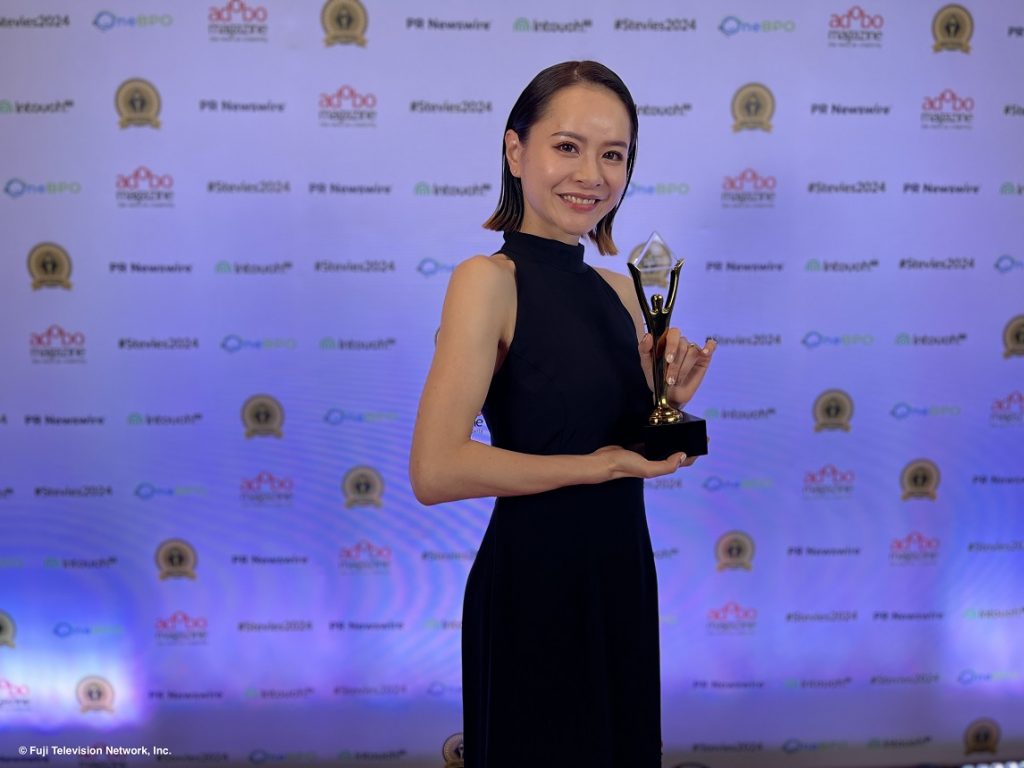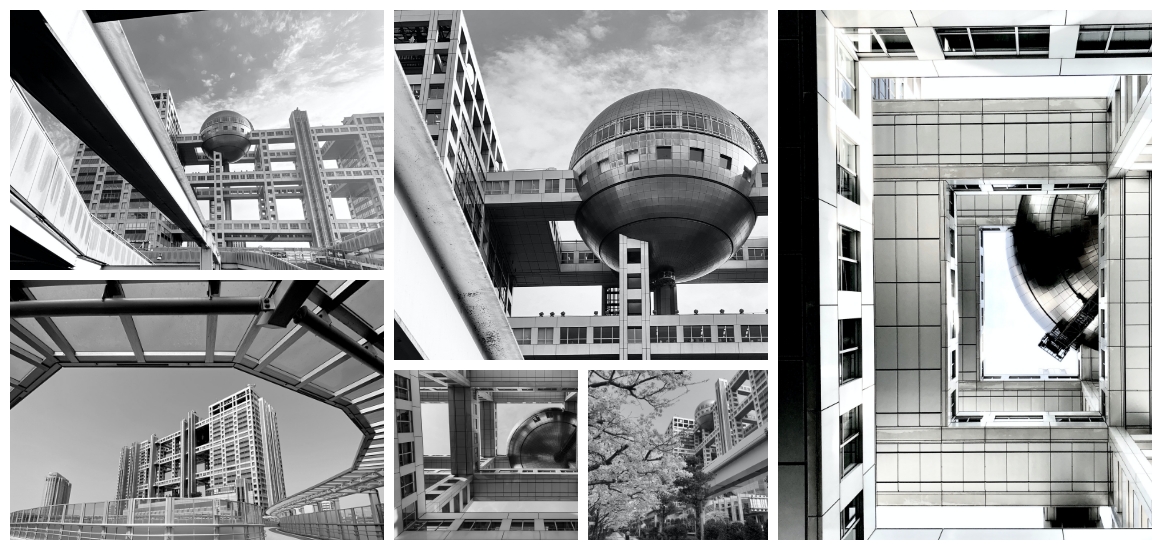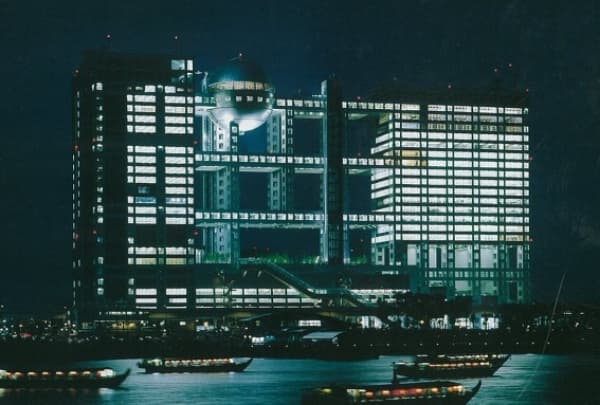The World-Renowned TANGE
-Kenzo Tange- (1913-2005)
The headquarters building of Fuji Television Network, Inc. was designed by Kenzo Tange. As a highly acclaimed architect who has created many symbolic works such as Yoyogi National Gymnasium, Hiroshima Peace Memorial Park, and Tokyo Metropolitan Government Building, he was the first Japanese to win the Pritzker Architecture Prize, often considered to be the “Nobel Prize for architecture.”
After completing his graduate studies at Tokyo Imperial University, he taught at his alma mater from 1946 to 1974 and presided over the Tange Laboratory. In addition to fostering many outstanding architects, including Takashi Asada, Sachio Otani, Taneo Oki, Koji Kamiya, Fumihiko Maki, Arata Isozaki, Kisho Kurokawa, and Yoshio Taniguchi, he was involved in the education of future generations at the Polytechnic University of Milan, Harvard University, Tsinghua University, and other institutions around the world.
In the 1960s, he proposed "A Plan for Tokyo 1960," which emphasized the need for structural reforms to see the growing city of Tokyo through a system of communication. At that time, he worked on the issue of "space and symbolism" and designed the Yoyogi National Gymnasium (1964) with a suspended structure, which was rare back then. In particular, the "double suspension structure" of the First Gymnasium was unprecedented in the world. It is said that the double suspension structure, with additional cables running from the main cables, represents the pinnacle of modernist structural expressionism (showing structural technology as expression), which began with Le Corbusier's project for the Palace of the Soviets. This was used as a venue for the Tokyo Olympic and Paralympic Games twice, in 1964 and 2021.
Tange believed that "the waterfront subcenter is the place where the concentration of Tokyo can be diffused, and the city could respond to internationalization and information technology." He therefore strongly pursued for the development of the Tokyo Bay area. In the midst of making this development a reality, Tange participated in a competition along with the Fujisankei Communications Group, for the development of the waterfront area, which he won. As a symbol of the entire Tokyo waterfront subcenter, he designed the Fuji Television Headquarters Building (1996), a state-of-the-art media center in the Odaiba area.
He also designed capital city construction plans, urban plans, and campus plans around the world, including oil-producing countries in the Middle East, newly developing countries in Africa, and Singapore.
Even more than an architect, he was very much active as an urban planner. This is the reason why he is called the "The World-Renowned TANGE."








 Fuji TV
Fuji TV





 The highlight of the building is the ●. Within the large space between the two towers, a "spherical observation room" 32 meters in diameter, covered with titanium was constructed. This was positioned 100 meters up in the sky! (Due to height regulations, the highest part of the sphere is 123.45m.) This sphere has come to be called the "symbol within a symbol" of this building.
The highlight of the building is the ●. Within the large space between the two towers, a "spherical observation room" 32 meters in diameter, covered with titanium was constructed. This was positioned 100 meters up in the sky! (Due to height regulations, the highest part of the sphere is 123.45m.) This sphere has come to be called the "symbol within a symbol" of this building.

 When the company building is viewed from Tokyo Bay, between the asymmetrical twin skyscrapers, are the symbolic sphere, the massive and dynamic structure expressed with the vertical and horizontal mast columns, and the large transparent seeming space. All of this portray a sense of unity and beauty as a single building, despite it being a large-scale multifunctional structure.
When the company building is viewed from Tokyo Bay, between the asymmetrical twin skyscrapers, are the symbolic sphere, the massive and dynamic structure expressed with the vertical and horizontal mast columns, and the large transparent seeming space. All of this portray a sense of unity and beauty as a single building, despite it being a large-scale multifunctional structure.
